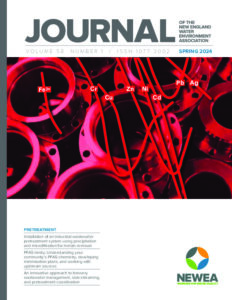Developing an Asset Management Strategy For Your Utility
The development of an asset management strategy, like the development of a comprehensive plan or master plan for the utility system, requires a long-term view and the engagement of the leadership throughout the utility organization. At the outset clear goals must be defined and the elements of a systematic program should be outlined. Although the level of detail can vary widely, there are several elements common to any asset management program.
Overall Strategy
To develop an overall asset management strategy, a water or wastewater utility should begin with these key steps:
- Develop appropriate asset management objectives and integrate them with other utility goals.
- Organize a cross-functional asset management team to help guide development of the program.
- Define targets and measurements to meet the identified objectives.
The strategy is not static and it needs to be reviewed periodically as part of a continuous improvement cycle. It is important to remember that asset management is not a plan as such; rather it is a program or process that relates to all the functions of utility operation.
Elements of an Asset Management Program
An asset management program can be described from the standpoint of the elements involved to create and implement the program. Typical elements include the following:
- Developing a Strategy (as described above).
- Assessing Current Asset Management Practices. All utilities have some level of systems and procedures in place that guide the functioning of the utility. They may include computerized maintenance, capital planning and standard operating procedures for operations and maintenance. This assessment step involves taking a holistic view of the utilities’ existing systems and practices to define its strengths and weaknesses. These results can be compared to the goals set in the strategy to define the utility’s “gap.”
- Developing an Implementation Plan. Based on the assessment, the utility can then set priorities and actions to improve asset management practices. This plan would likely include short-term and long-term actions, specific schedules, assignments and the cost resources needed to implement the plan.
- Inventorying Assets. A key step in managing assets is to determine what assets are owned by the utility and the condition of these assets. The data to be collected during the inventory would typically include the following: size or capacity, construction materials, location, installation date, physical condition, and remaining useful life. Cost data to be compiled includes the original acquisition, maintenance, refurbishment and replacement costs. All of this information needs to be organized on an asset-by-asset basis.
- Planning for Renewal and Replacement. The physical and cost data developed in the inventory will provide a basis for utility managers to plan and carry out work that restores or replaces an existing asset toward its original size, condition or capacity. These decisions must be made on a life cycle basis so that the trade off between maintenance cost and replacement cost can be optimized.
- Information Systems. There usually are significant efficiency gains to be made by integrating various asset management tools into the program. The utility may have existing tools or systems related to maintenance, laboratory, finance, GIS, documents, procurement, etc. Often these databases and systems can be combined or linked to gain efficiency and improve decision making (see Chapter 4 for detailed information on asset management tools).
- Internal and External Communications. Implementing asset management practices will impact the culture of the organization, making good communications essential for success. Developing methods for outreach, change management and reporting to internal decision makers and external stakeholders are important for communicating asset condition, investment alternatives and potential risks if assets are not maintained.
These elements do not necessarily occur in sequence; many will take place in parallel. For example, inventorying can begin while the assessment is ongoing and communications need to begin immediately and be continuous.
This chapter of the Resource Guide compiles a list of references and other data sources as well as case examples related to developing an asset management strategy.
Resource List
Change Management / Communications
8. Fortin, John; Colbert, John; and Regan, “Establishing a Solid Foundation” Maintenance Technology Magazine.
9. Mikes, Joe “Time for a Change” Maintenance Technology Magazine. http://www.mt-online.com/articles/04-01mm01.cfm
10. Heisler, Randy “Communication is the Mortar of Maintenance Excellence” Maintenance Technology Magazine. http://www.mt-online.com/articles/0702_maintexcel.cfm
Developing an AM Strategy
11. Lawrence, Mark “Creating a Reliability Culture” Maintenance Technology Magazine. http://www.mt-online.com/articles/1204air.cfm
12. Fortin, John; Colbert, John; Regan, Ted “MWRA’s Asset Management Program – Phase I” Maintenance Technology Magazine. http://www.mt-online.com/articles/0902_mwraphase1.cfm
13. Salo, John. “Application of Austarlia/New Zealand Approach for Evaluating Asset Management” NEWEA 2002 Annual Conference.

